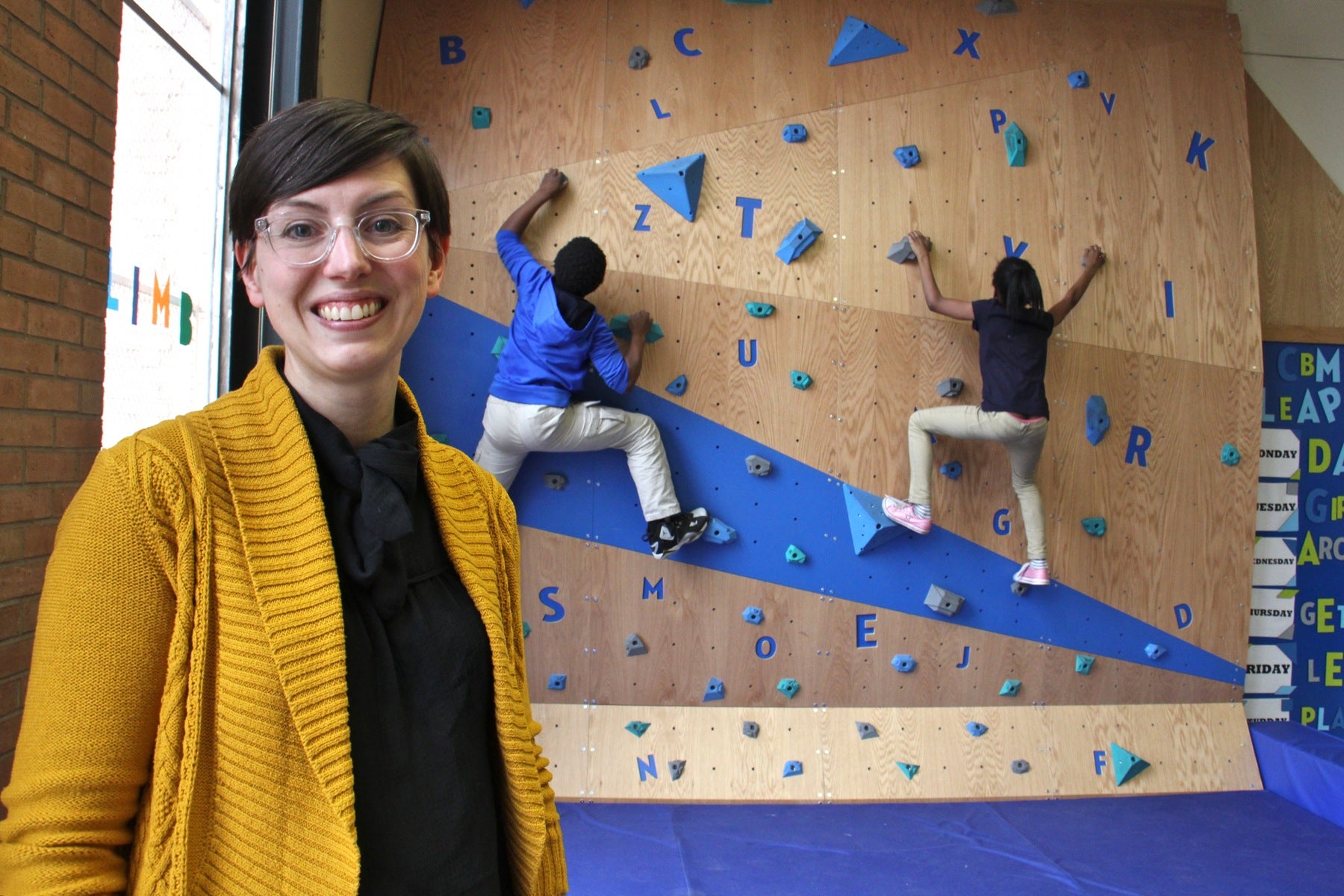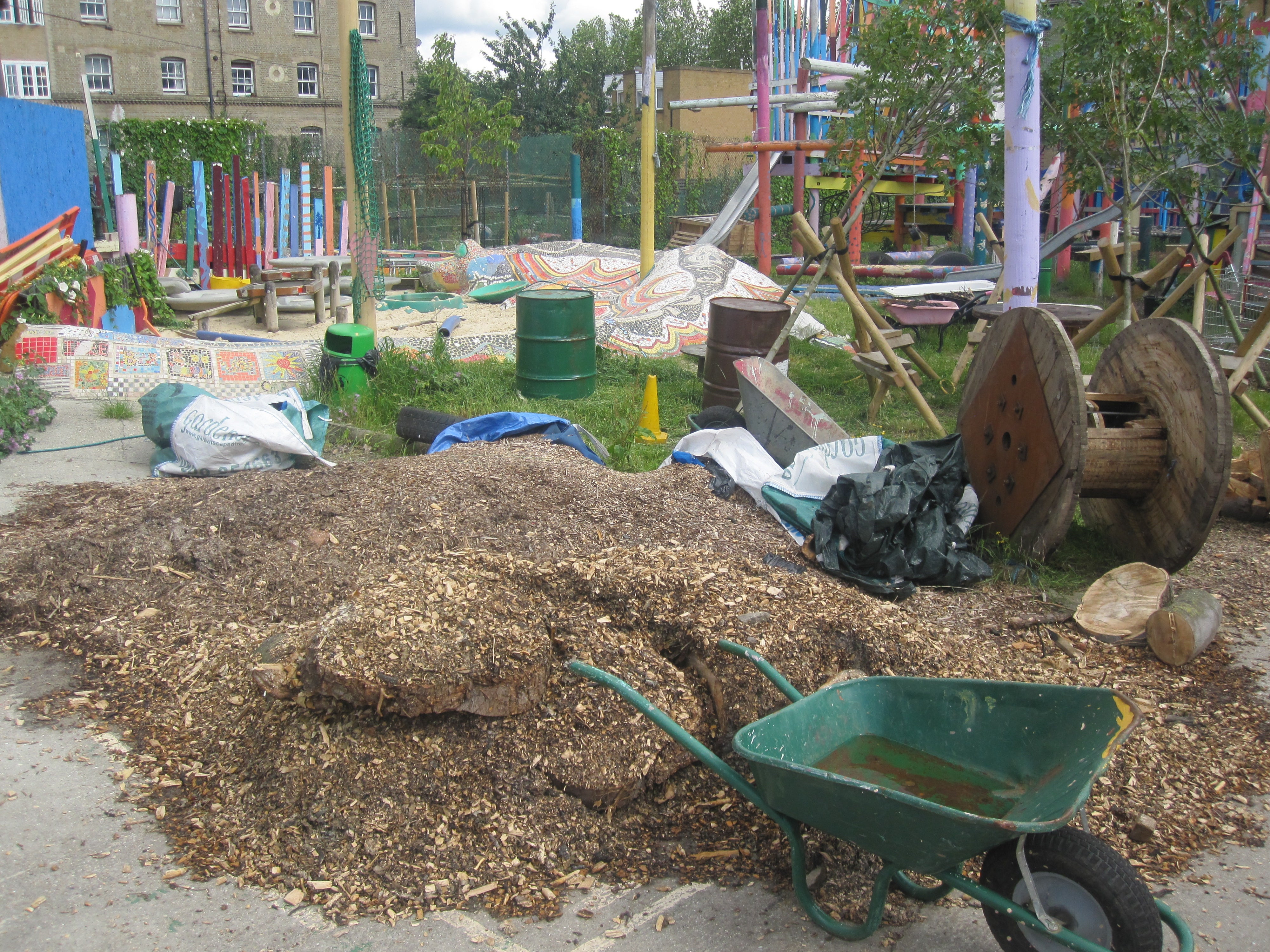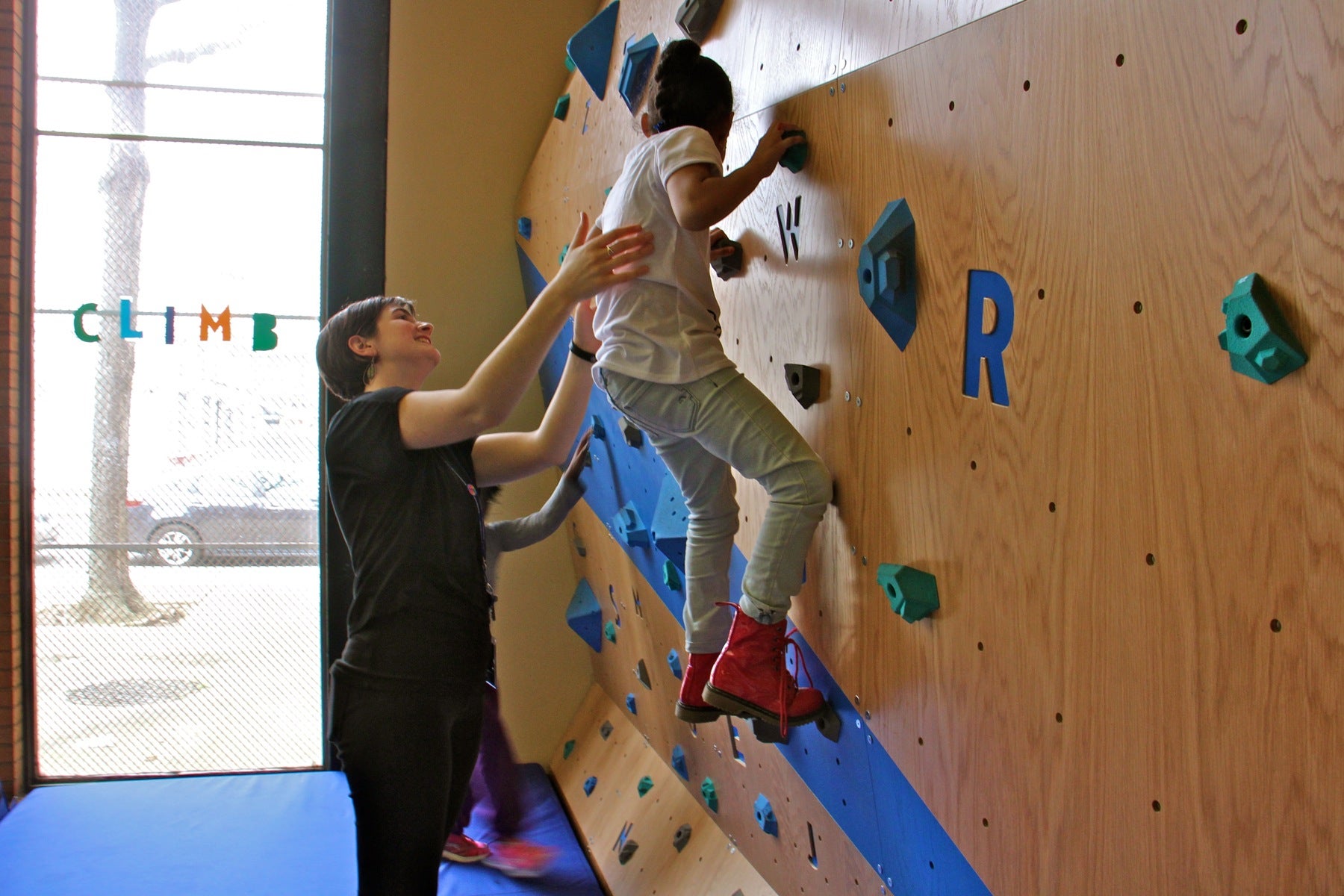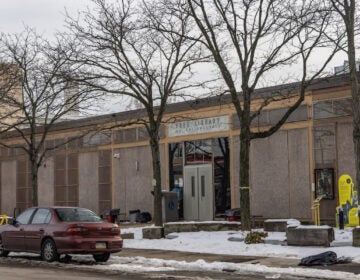A Philadelphia library gets ‘risky’ with a new play space

It’s a weekday afternoon just before 3:00 p.m. and Cecil B. Moore Library in North Philadelphia is quiet. But librarian Kayla Hoskinson says when school lets out, kids will flock to the library’s newest attraction: a ten-foot-by-ten-foot climbing wall.
“They really, really love it,” says Hoskinson. “Adults were kind of worried about it, a little skeptical, the first adults who came in when we opened after having installed, like they couldn’t see anything beyond the risk factor, but we actually haven’t had any injuries so far.”
The first kids trickle in. And yes, after sitting in school all day, they are literally climbing the walls.
Hoskinson estimates the number of kids visiting the library on a daily basis has doubled since the wall opened in December.
It all started with an idea the library had to create play spaces where they could get out some of that pent-up energy. Meghan Talarowski is the founder and director of Studio Ludo, a nonprofit that designs and promotes play structures that encourage free, imaginative play. Together with DIGSAU, a Philadelphia based architecture firm; Smith Memorial Playground and Playhouse, a nonprofit that promotes opportunities for unstructured play; and Erector Sets, a local fabricator, they partnered with the library to create this play space — the first of three that will go into libraries across the city. The others will be in the Whitman and Wyoming branches
The wall fits in with a philosophy Talarowski adheres to in all of her projects. It’s called risky play.
“Risky play is the idea of encouraging kids to use their bodies in different ways that are developmentally appropriate for them,” says the fast-talking Talarowski, brimming with excitement at seeing the structure in use. “As we grow, we automatically want to do slightly riskier things with our bodies. We want to move more, we want to jump off of things, be higher, so if you look at the way that playgrounds have been designed, they’re really geared more towards the younger age range.”
Talarowski’s high energy ebbs slightly when she thinks about the plastic prefab playset at her neighborhood playground.
“I have a 4-year-old, and she’s already basically aged out of her local playground.”
Play has changed over the years, and those of a certain age can remember going outside and not coming home until the street lights came on. Play, Talarowski argues, used to mean few or no rules. Objects like bricks, rocks, or pieces of wood became the grist for more imaginative fun and games. That changed in the 70’s and 80’s.
“There were several very high-profile lawsuits that happened, and so cities got really scared,” Talarowski says.
Local governments started getting rid of pavement, wood, and metal, and bringing in softer synthetic surfaces and plastic play equipment. New safety regulations crept into schoolyard playgrounds and neighborhood jungle gyms.
“They’ve gotten smaller and smaller and safer and safer and really it’s a climb up, slide down kind of scenario,”
With its call back to a more thrilling era of play, the Free Library of Philadelphia is following the lead of cities such as London, New York and Berkeley, where newer playgrounds sometimes look more like a messy backyard workshop than your standard kid-friendly romping zone. Talarowski recalls one British playground where children experiment with the kind of sharp objects American parents typically hide from their kids.
“Full-on tool usage like saws and hammers and nails, and they’re actually building large scale structures,” she says.

It may sound like a recipe for disaster, but Talarowski says these spaces are popular. Her research showed they attract about 55 percent more people–and twice as many adults use the spaces as well. Still, it’ll be a while before they become widespread in the US.
“Here, when we were talking about risky play, it’s in a more confined setting, but they still get to move their bodies in ways that they’ve never done before,” she says.
And maybe in a place where they have never played before. Libraries are traditionally quiet spaces designed for curling up with a book or sitting behind a computer. But Talarowski says physical activity helps kids develop skills that are applicable in an academic setting.
“Not every kid is a book learner, and they may have that idea that they’re not good at learning,” she says. “and they climb the wall, and they get that confidence, and they say well maybe I actually could be good at learning. So then they come back to their homework once they get their energy out on the wall, they gain that confidence, and then they do better at their homework assignments.”

More kids filed in. Some went straight to the climbing wall while others took out their tablets. The rise of such devices, Talarowski says, has eroded kids’ physical competence.
“There’s a lot of data now about kids; there’s like a rise in sensory disorders, kids are falling out of their seats in class because they’re not moving their body enough, they don’t even know how to sit still anymore.
She says ultimately, encouraging adventurous play could lead to safer choices down the road.
“If a child never learns how to move their body, if they don’t understand that they can be up high and jump off the top of a climbing wall and be safe, then they may do something crazier like go to a top of a cliff and leap off with their friends and think they’ll be okay,” she says.
As we talk, one boy reaches the top of the wall. Cheers from the other kids reward him. We watch as he tries to figure out how to get down.
Listen to Shai Ben-Yaacov tell the story on Newsworks Tonight
WHYY is your source for fact-based, in-depth journalism and information. As a nonprofit organization, we rely on financial support from readers like you. Please give today.




